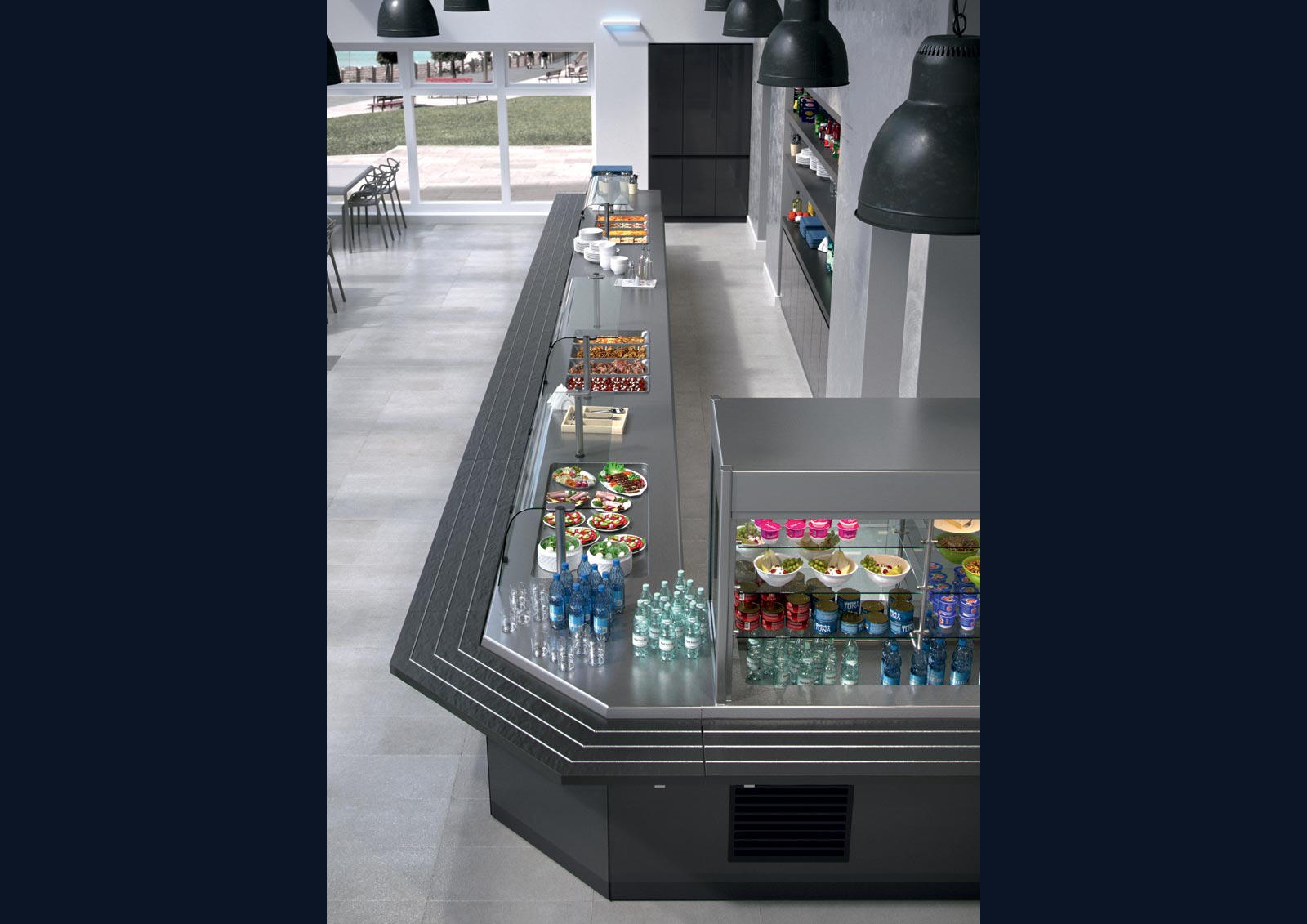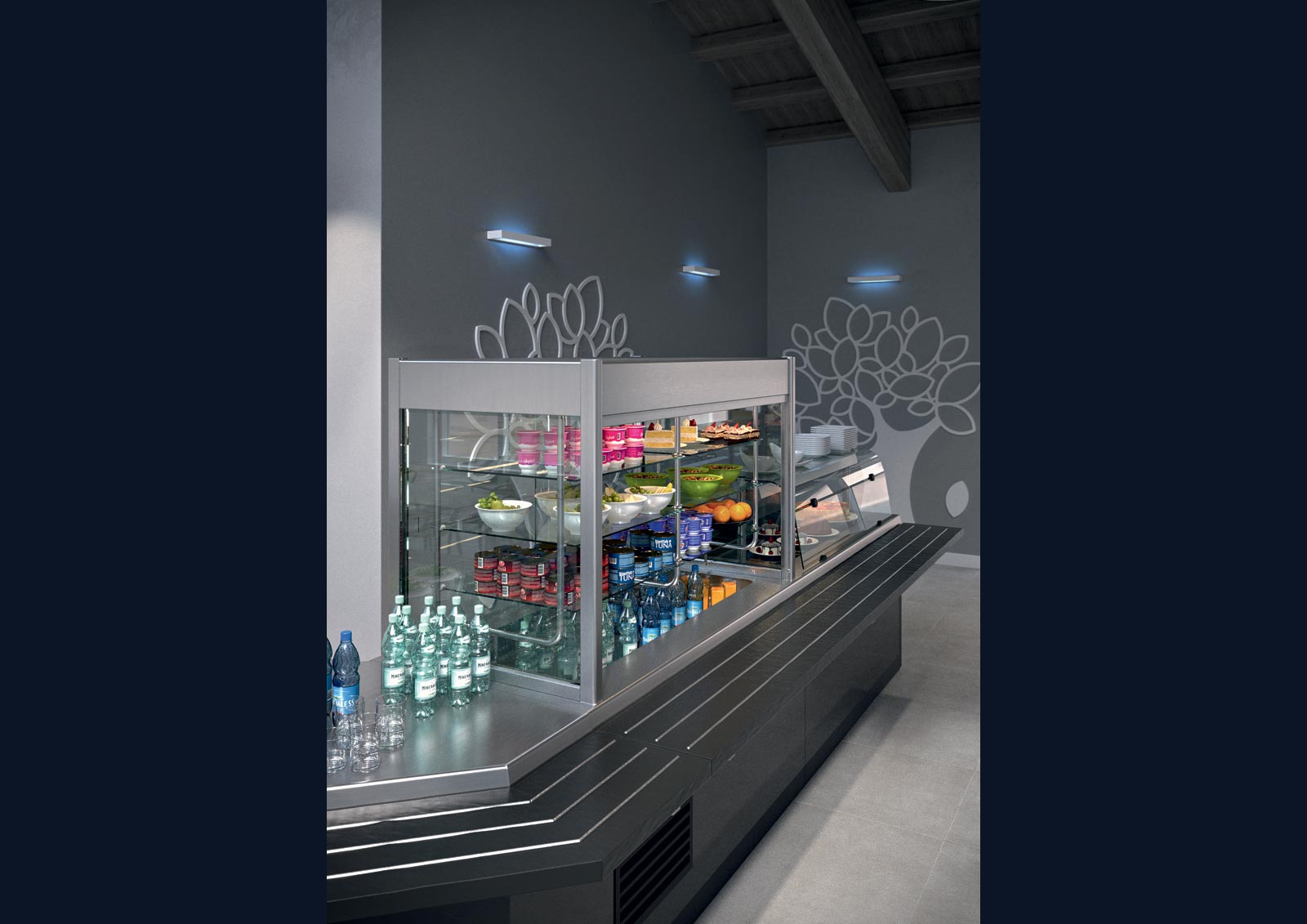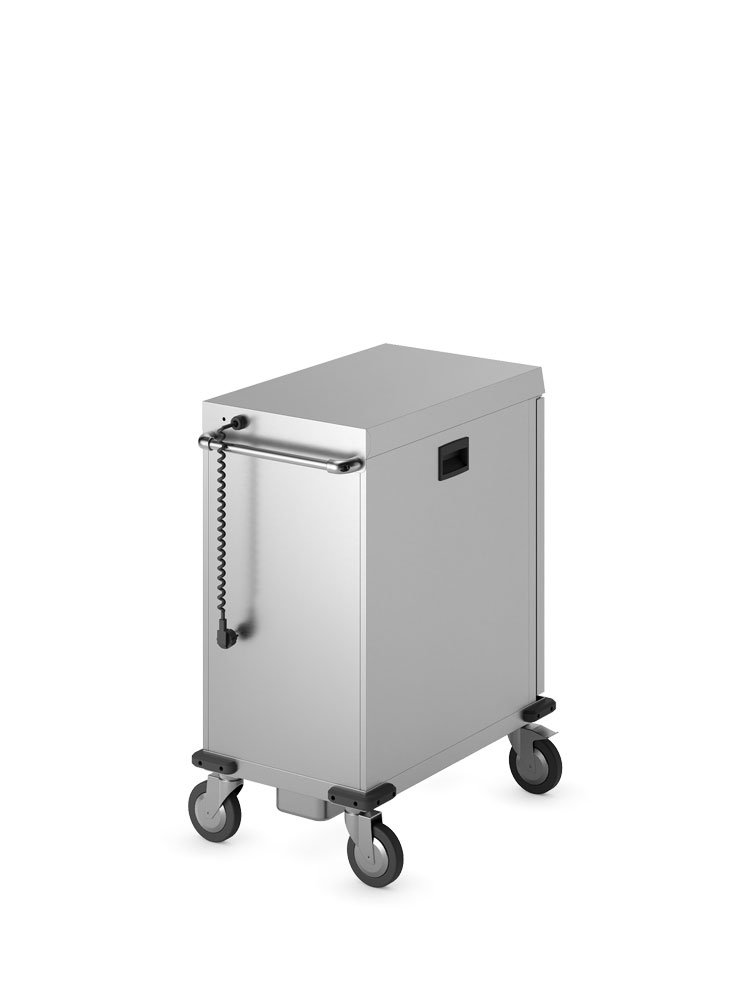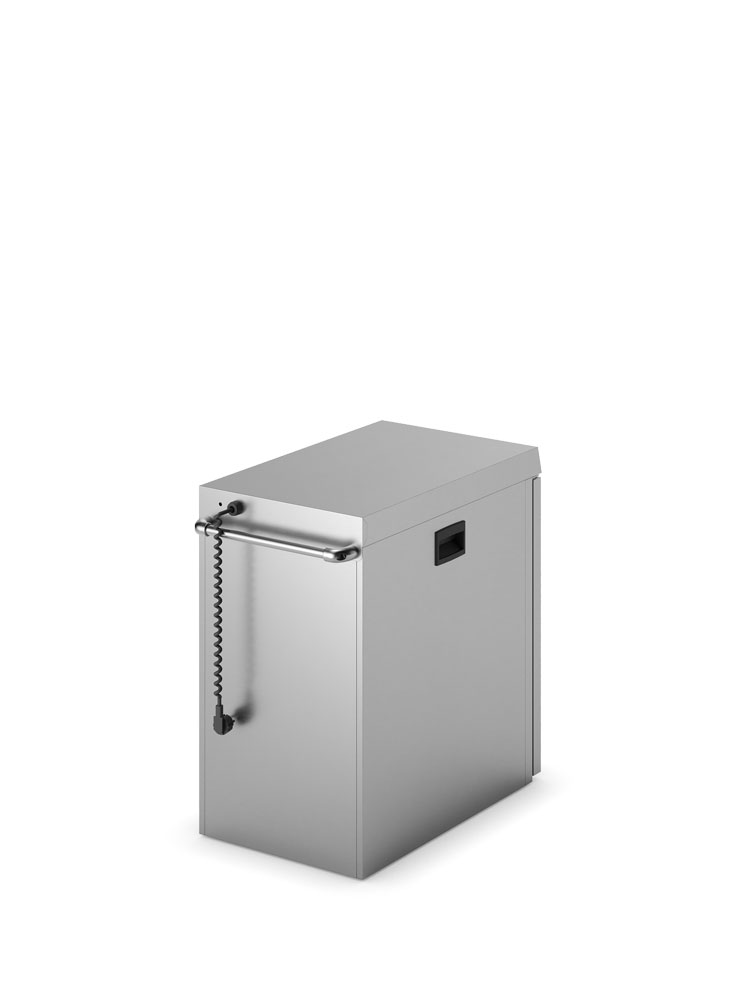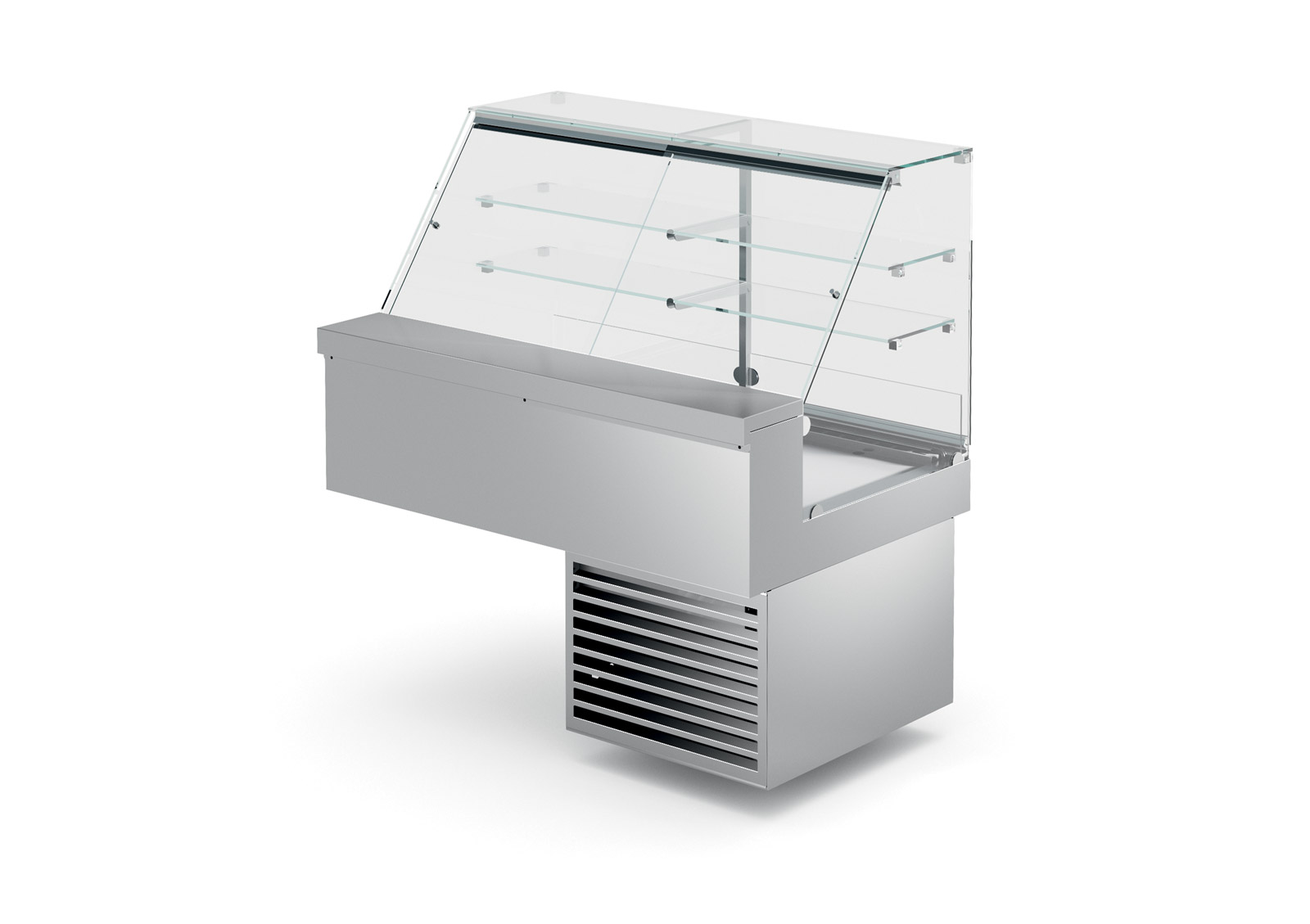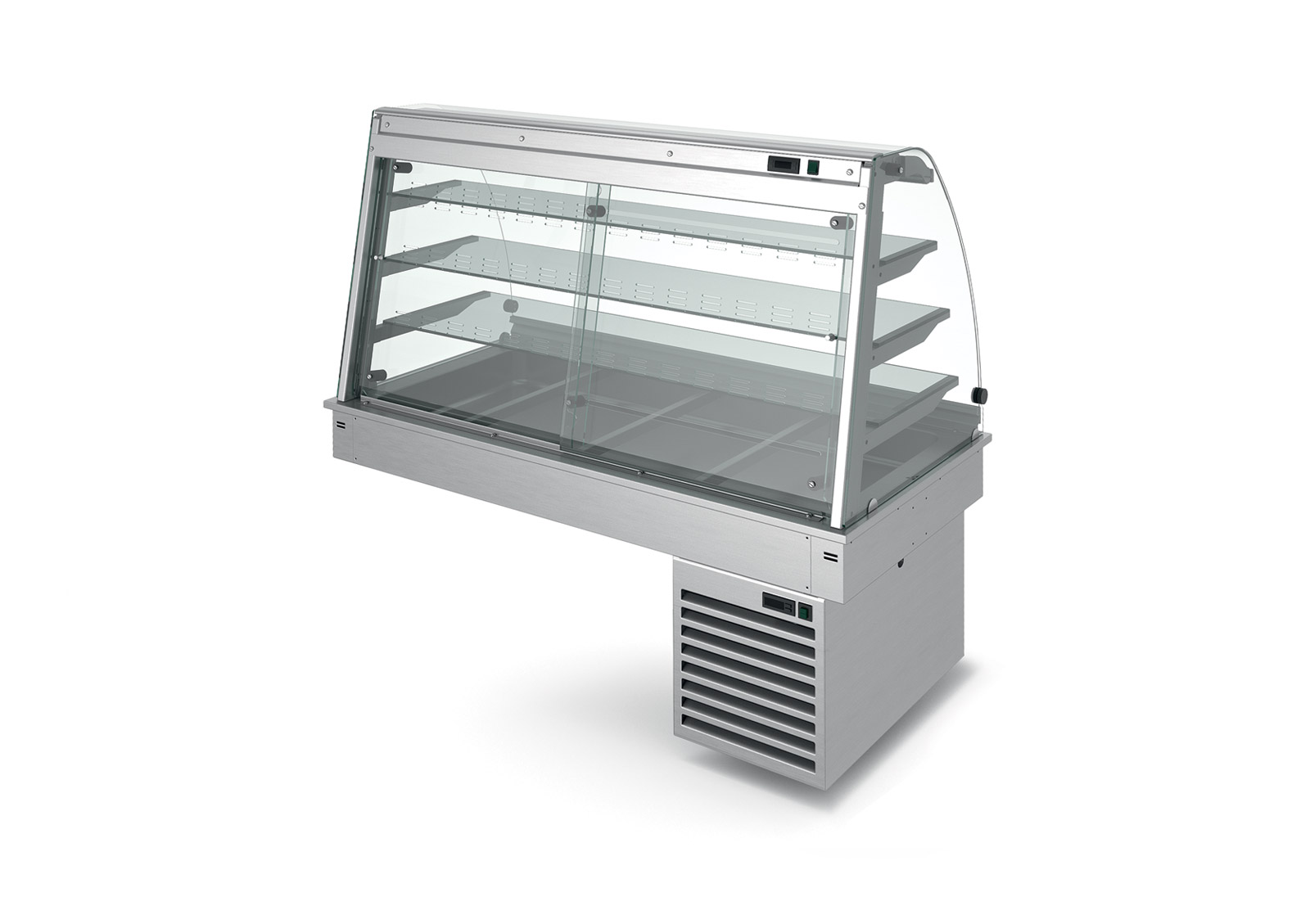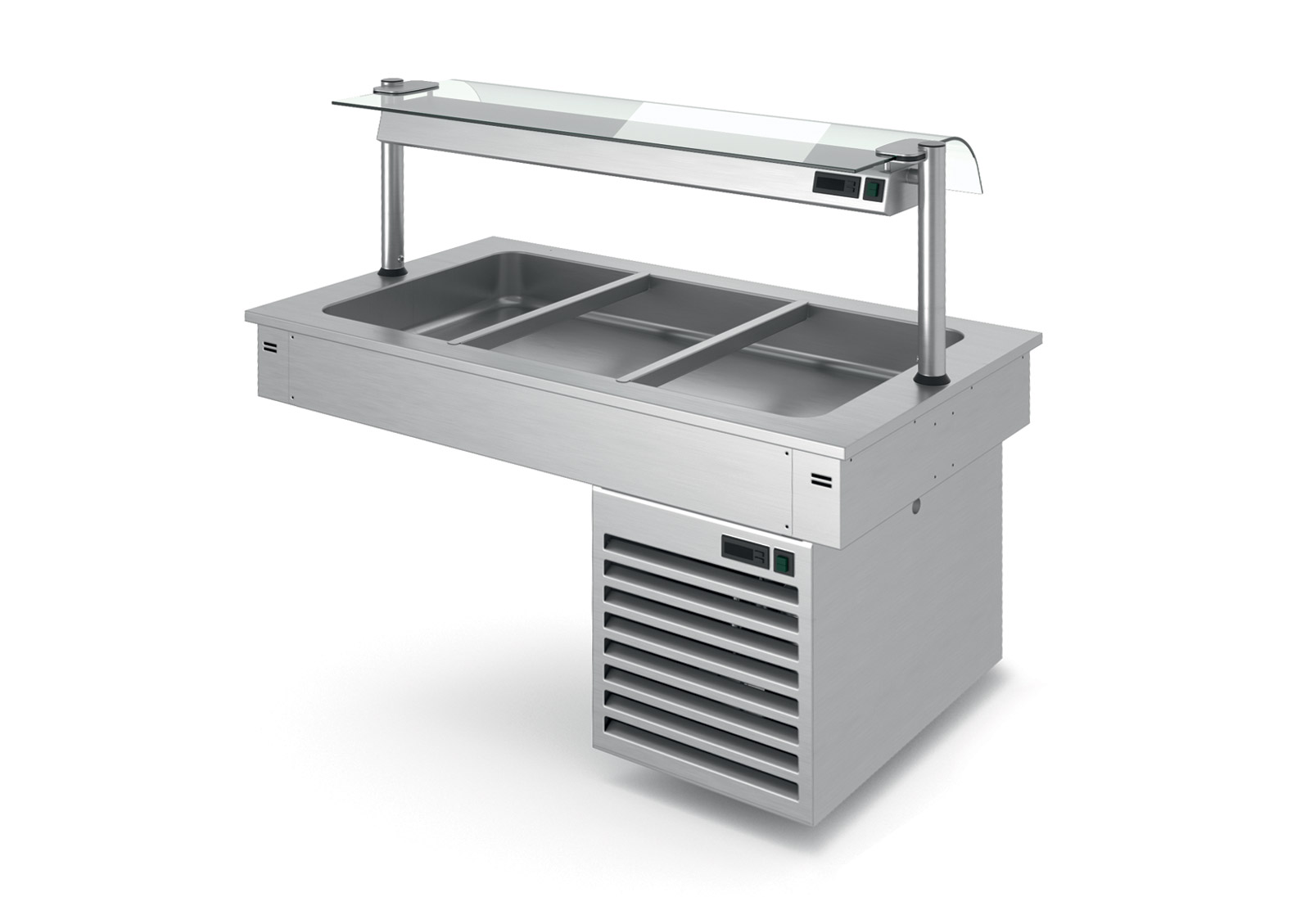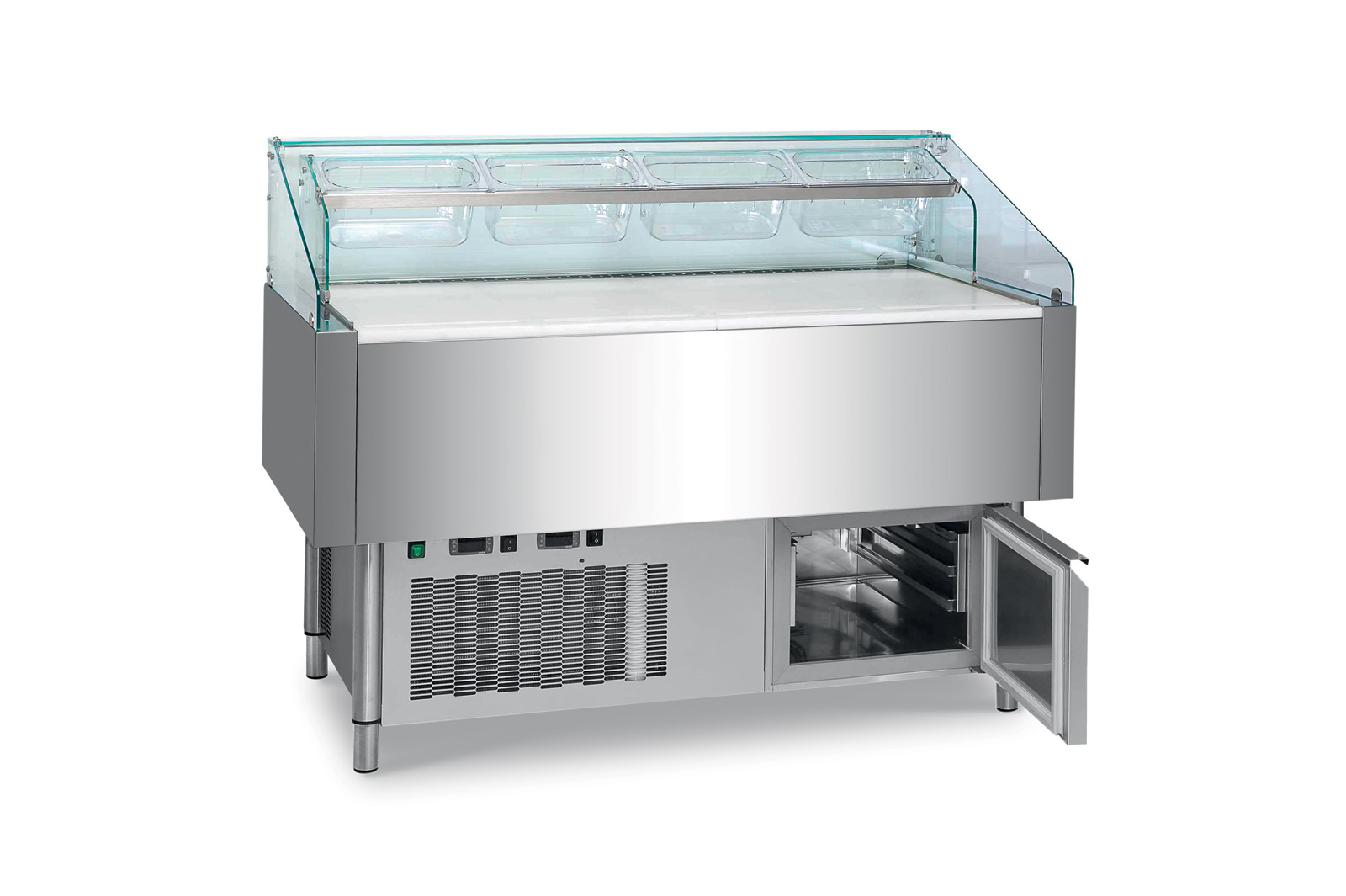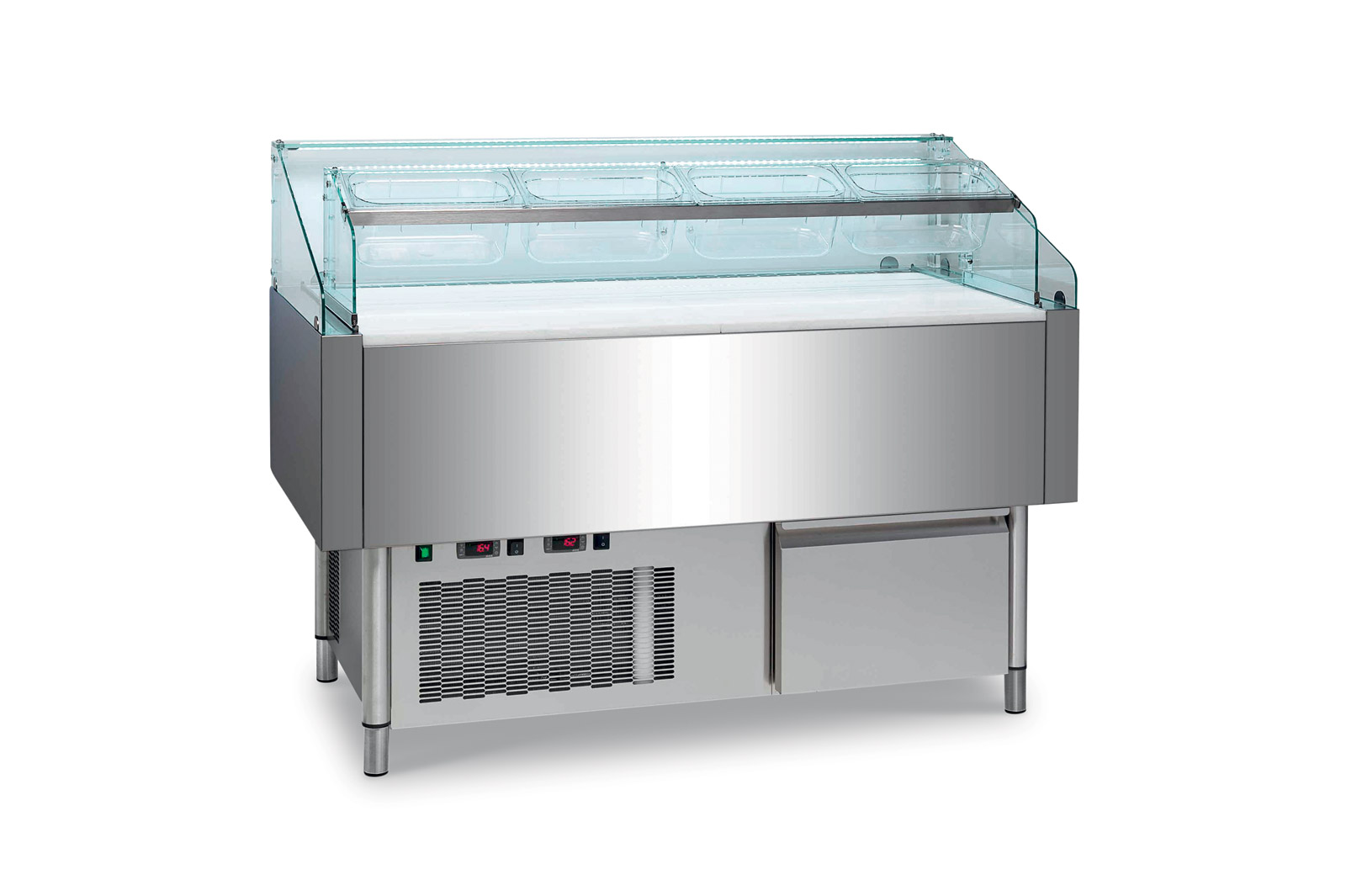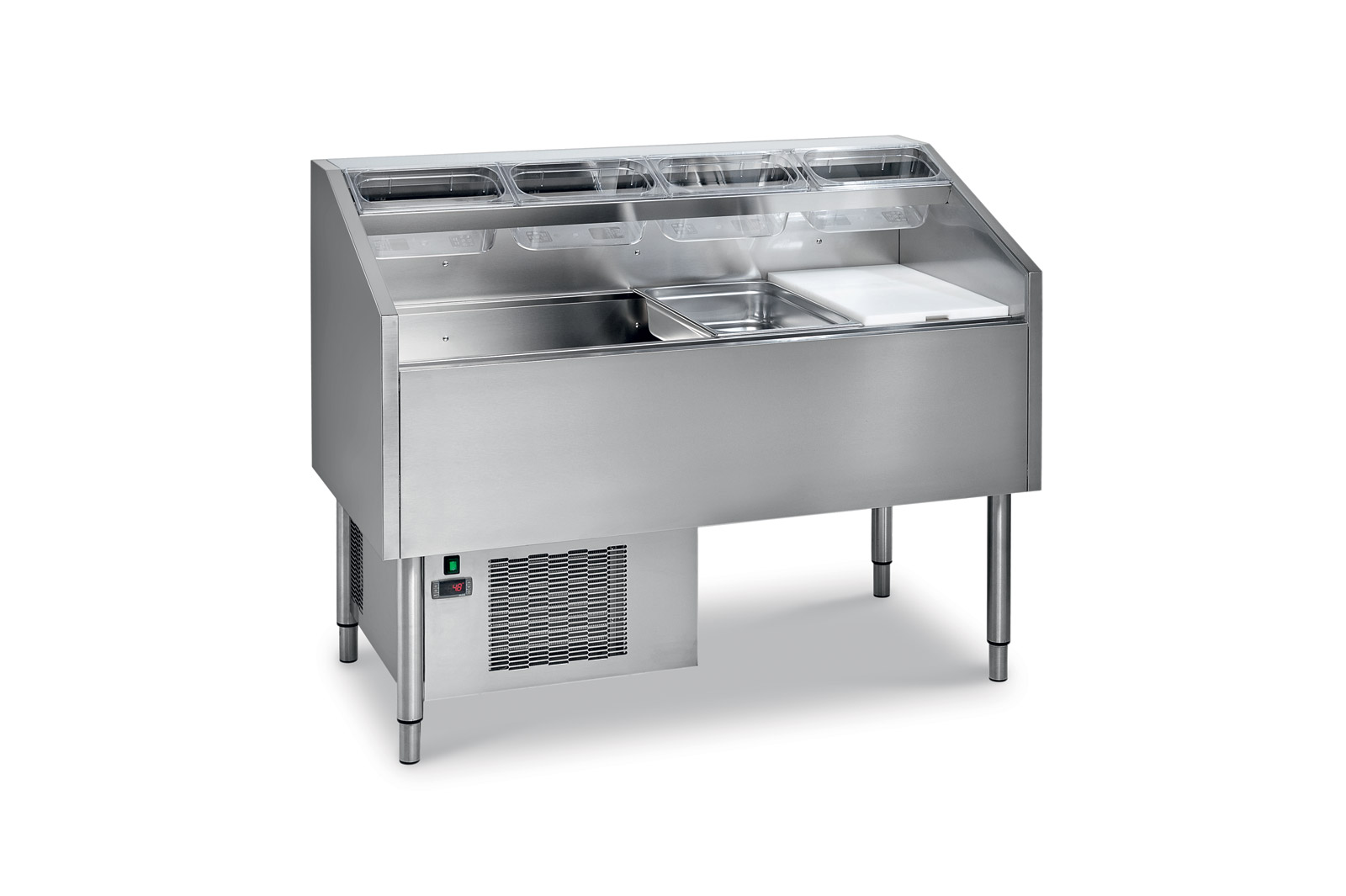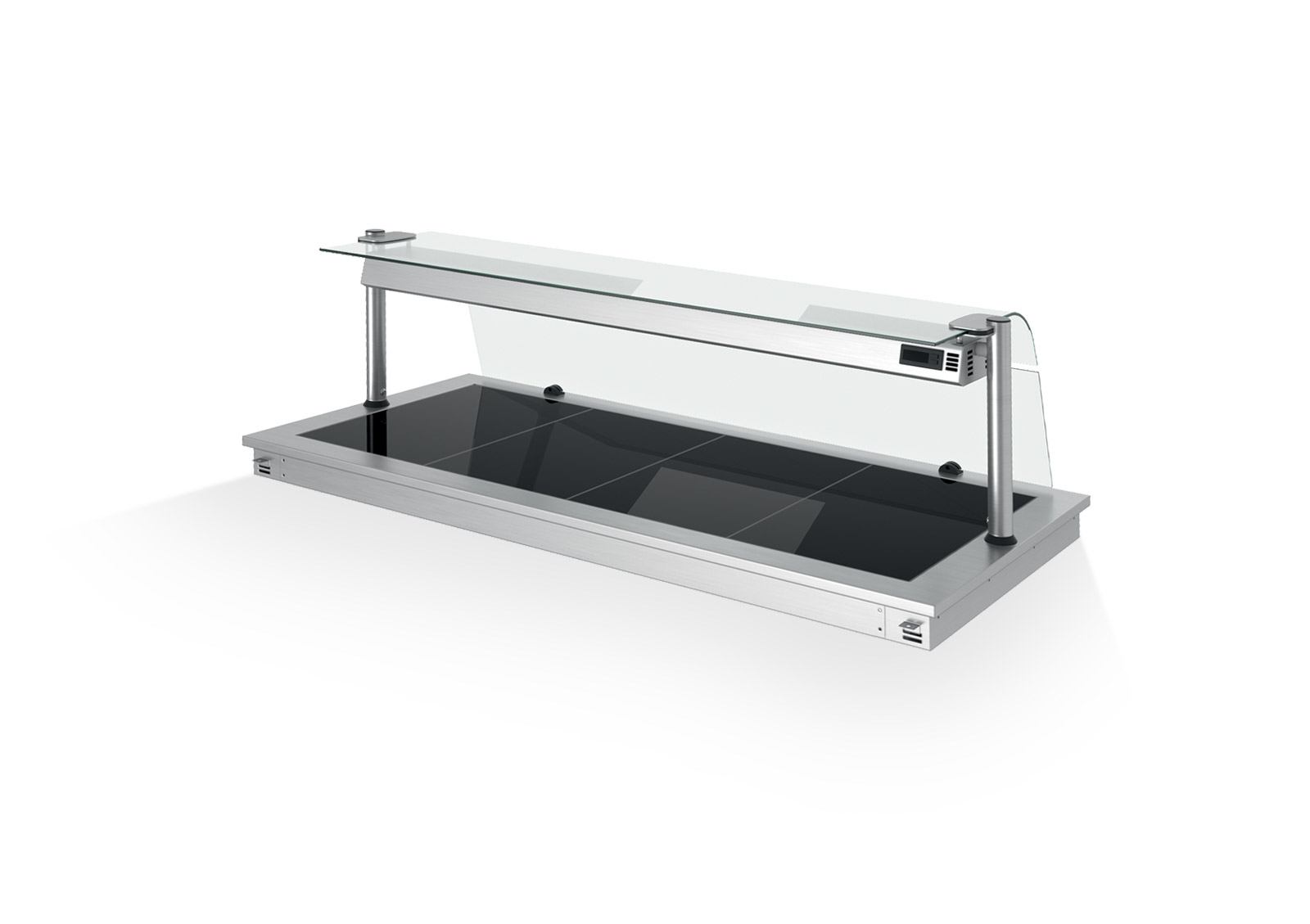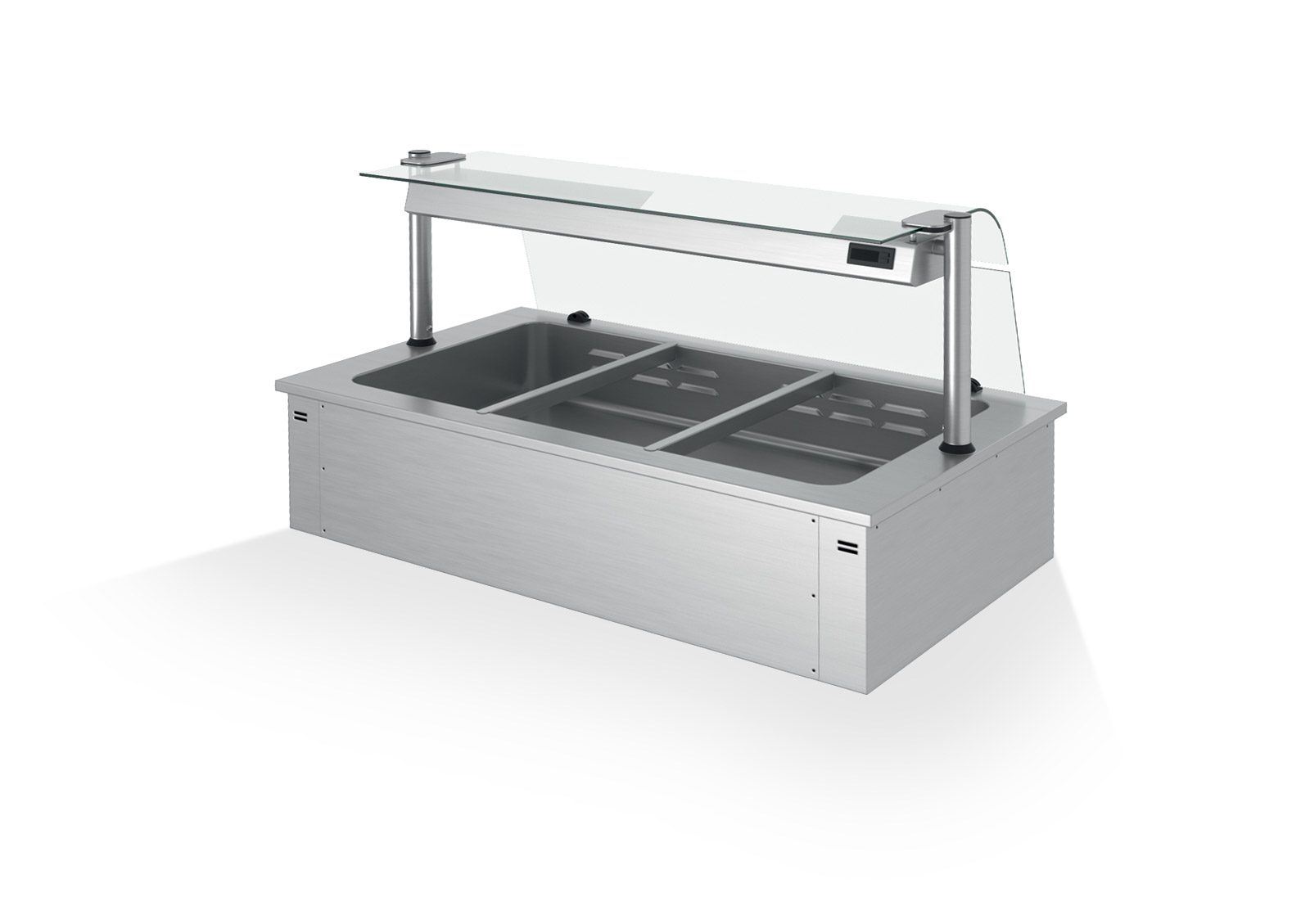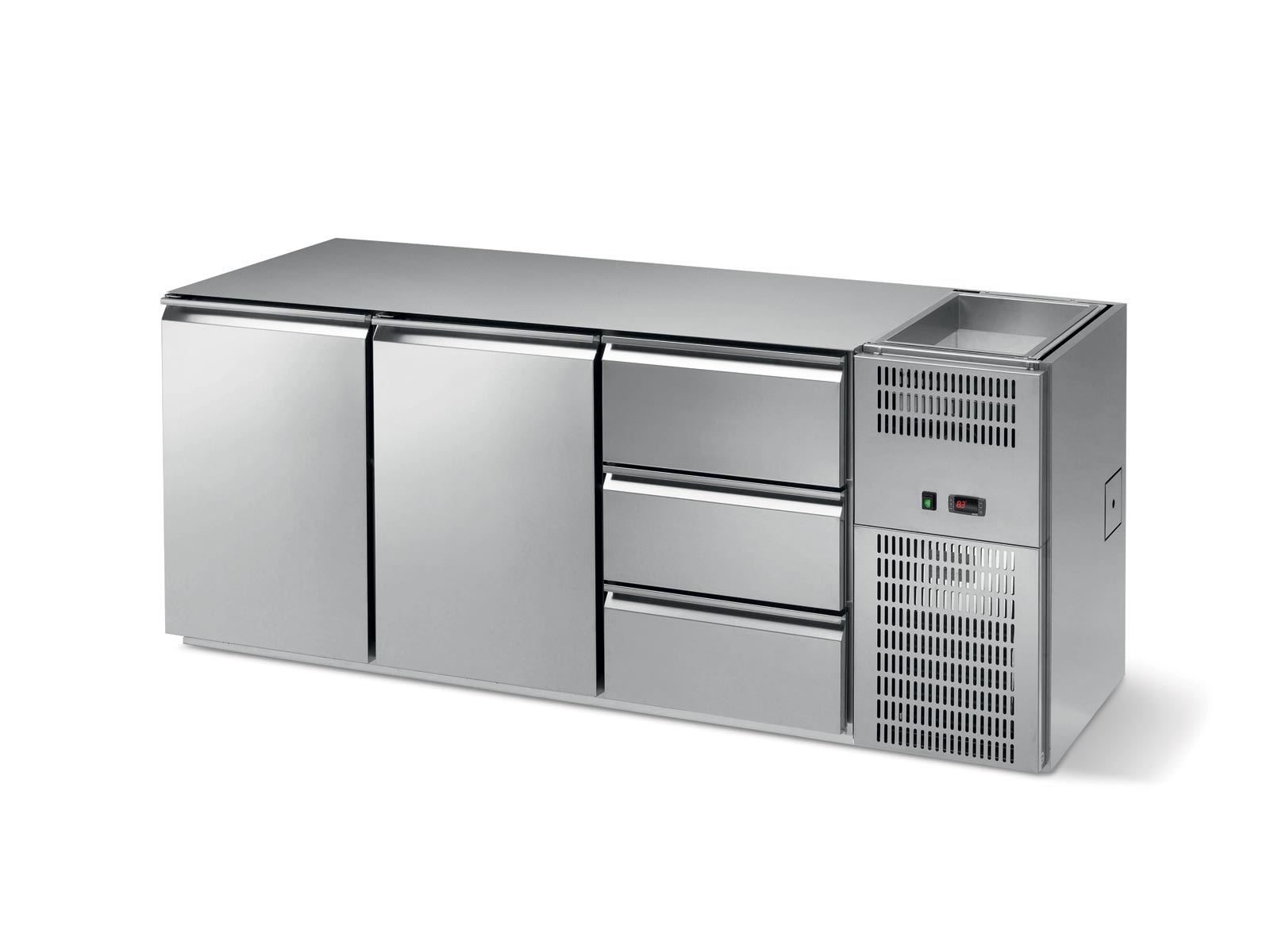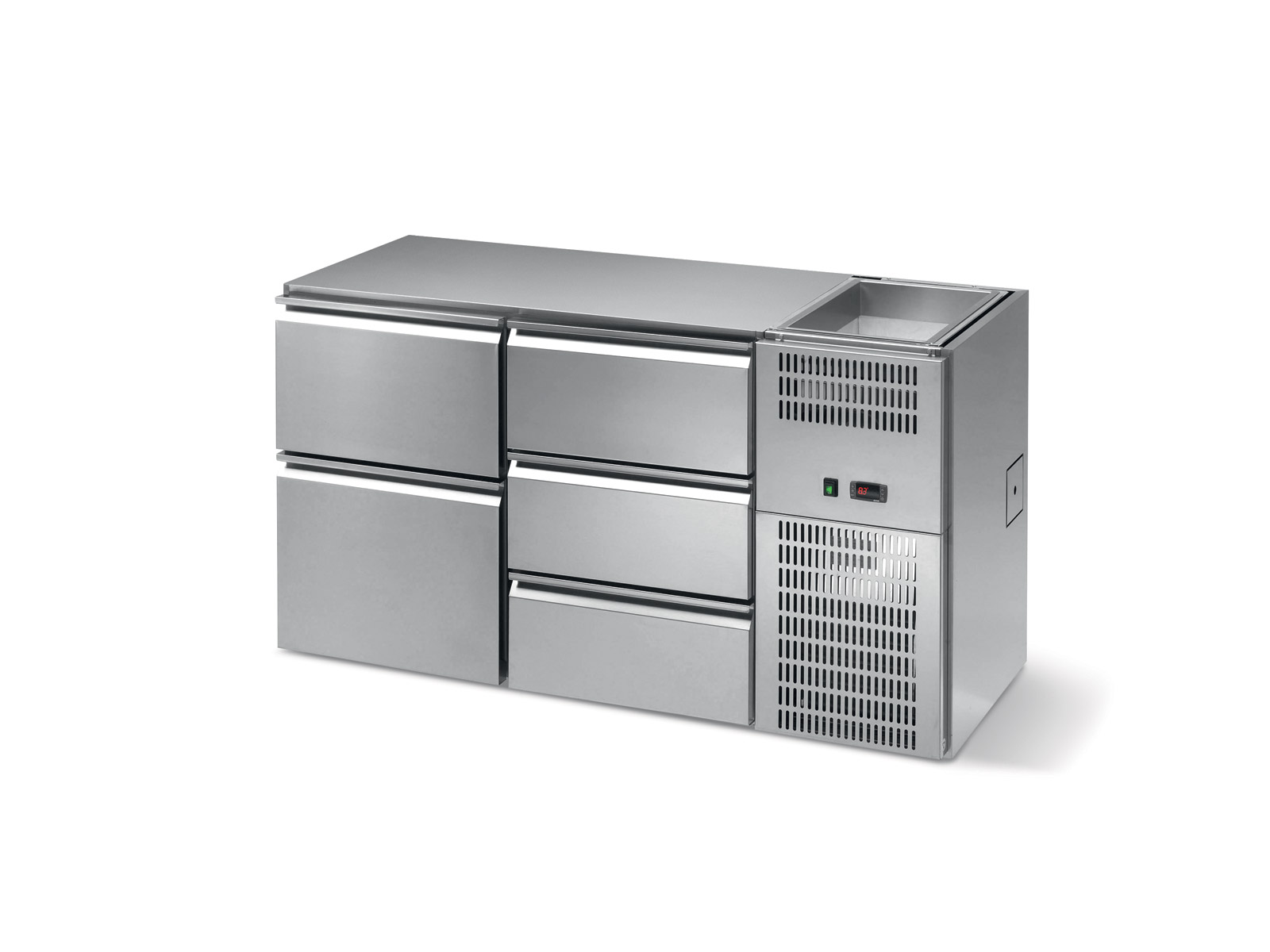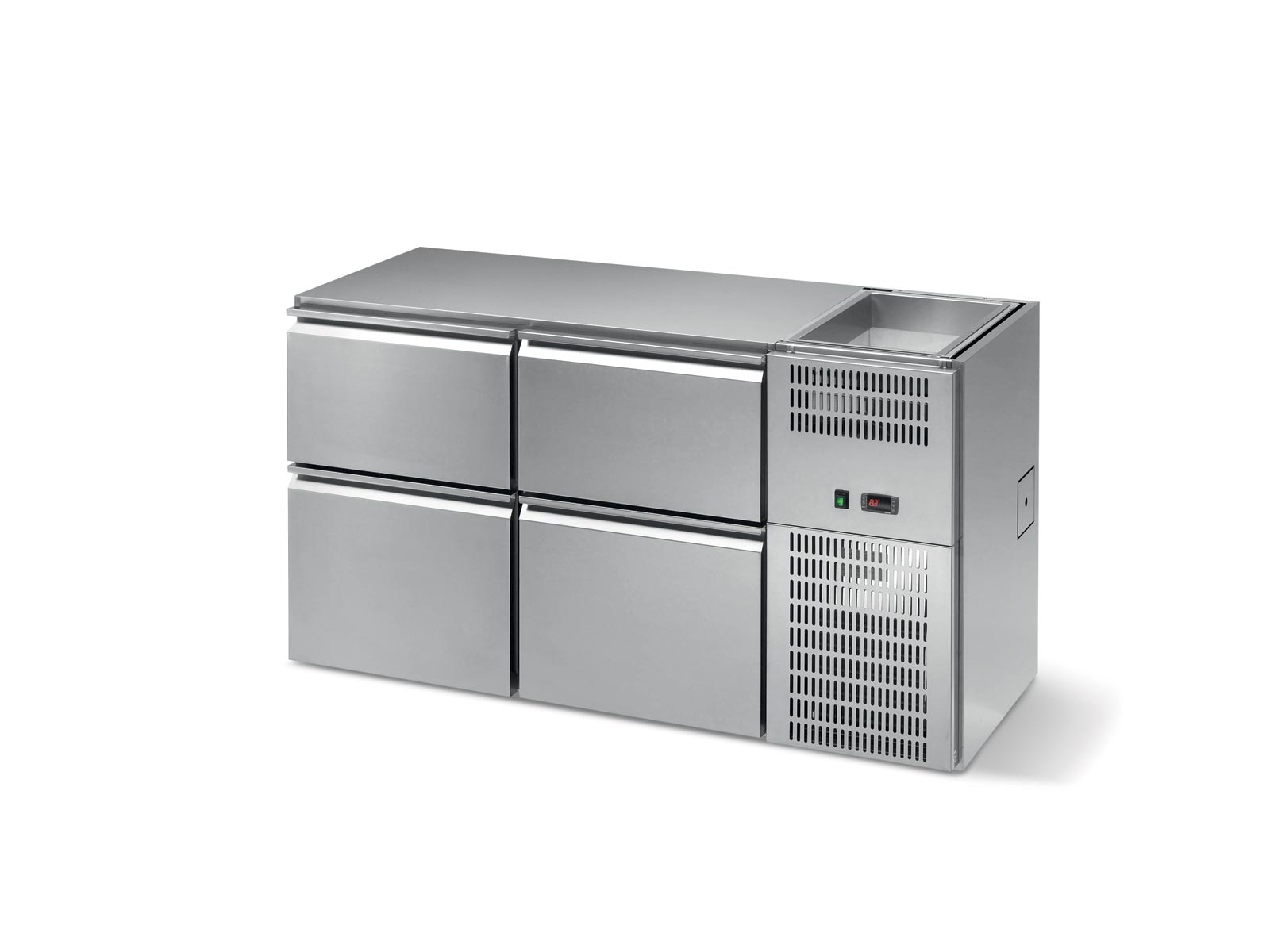Basic Lux Line
Elements consisting of unalterable and resistant surfaces in Quartz composite, frames in stainless steel AISI 304 to form compartments with bottom and support shelves, ventilated hot cupboards and refrigerated cells.
Structures mounted on height adjustable feet or possibility to use stainless steel plinths on the surface. Control touch screen differentiated for hot and cold cabinets.
The glass superstructures, designed according to their aesthetic sense and their functionality, are equipped with illumination and heating in relation to their use. Wide range of possible combinations of static or ventilated refrigerated elements, with free compartment or refrigerated cell. Water Bain-Marie, heated with air or tempered glass.
Neutral complement elements such as angles, façade continuity and adaptations for more complicated design situations. Lines carried out with independent structures or monocoque with plastic laminate coating and special planes or in simple and essential stainless steel. Easy use and assembly.
Basic Lux is the top range line: more versatile and complete
STRUCTURE
Maximum solidity and flexibility thanks to the welded stainless steel tubular structure.
CUSTOMISATION
Sides: lacquer, wood - Counters: stone - Tray rails: steel, glass, wood, stone.
PLUS
Units and cabinets with rounded edges to the advantage of a simple cleaning.
RANGE
The range Basic Lux has declined in hot elements, cold, neutral. They are also available in the catalog various solutions say "islands of distribution" to organize modern paths to "free flow".




